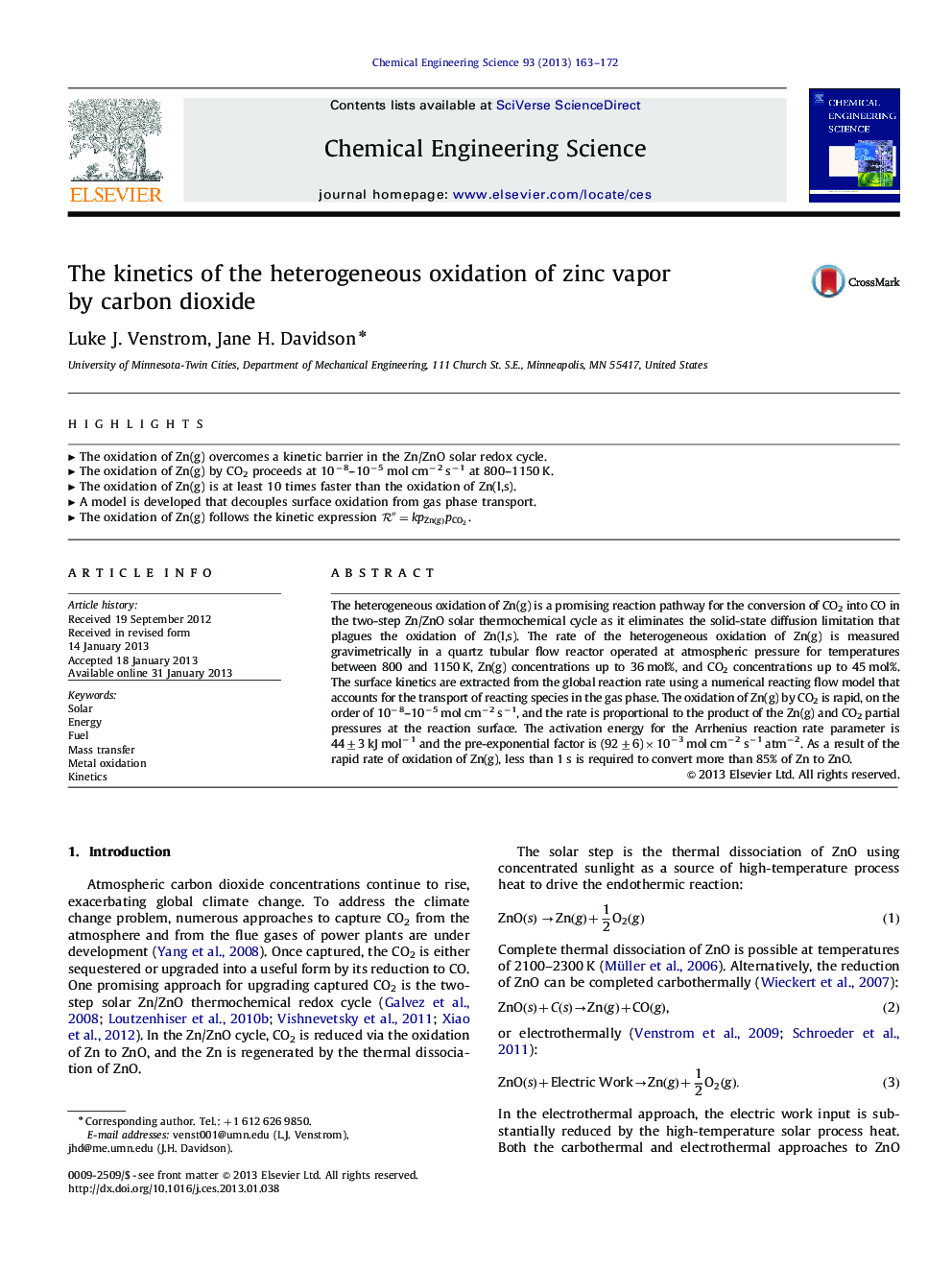| Article ID | Journal | Published Year | Pages | File Type |
|---|---|---|---|---|
| 155332 | Chemical Engineering Science | 2013 | 10 Pages |
The heterogeneous oxidation of Zn(g) is a promising reaction pathway for the conversion of CO2 into CO in the two-step Zn/ZnO solar thermochemical cycle as it eliminates the solid-state diffusion limitation that plagues the oxidation of Zn(l,s). The rate of the heterogeneous oxidation of Zn(g) is measured gravimetrically in a quartz tubular flow reactor operated at atmospheric pressure for temperatures between 800 and 1150 K, Zn(g) concentrations up to 36 mol%, and CO2 concentrations up to 45 mol%. The surface kinetics are extracted from the global reaction rate using a numerical reacting flow model that accounts for the transport of reacting species in the gas phase. The oxidation of Zn(g) by CO2 is rapid, on the order of 10−8–10−5 mol cm−2 s−1, and the rate is proportional to the product of the Zn(g) and CO2 partial pressures at the reaction surface. The activation energy for the Arrhenius reaction rate parameter is 44±3 kJ mol−1 and the pre-exponential factor is (92±6)×10−3 mol cm−2 s−1 atm−2. As a result of the rapid rate of oxidation of Zn(g), less than 1 s is required to convert more than 85% of Zn to ZnO.
► The oxidation of Zn(g) overcomes a kinetic barrier in the Zn/ZnO solar redox cycle. ► The oxidation of Zn(g) by CO2 proceeds at 10−8–10−5 mol cm−2 s−1 at 800–1150 K. ► The oxidation of Zn(g) is at least 10 times faster than the oxidation of Zn(l,s). ► A model is developed that decouples surface oxidation from gas phase transport. ► The oxidation of Zn(g) follows the kinetic expression R″=kpZn(g)pCO2R″=kpZn(g)pCO2.
